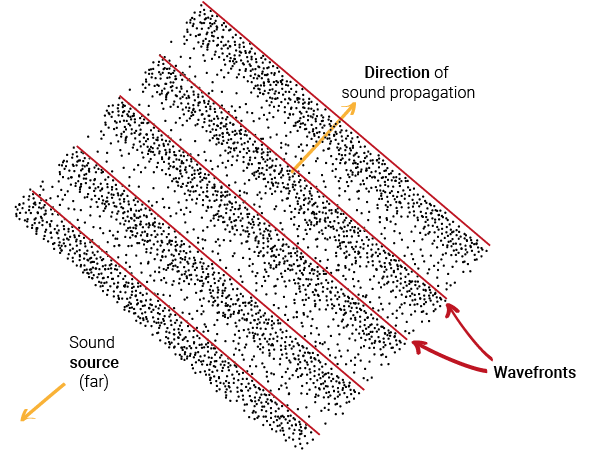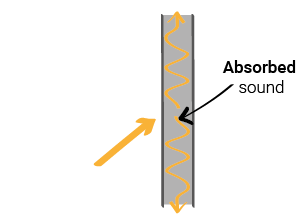
Sound propagation, reflection, absorption and transmission
Quite often, we receive questions on how sound propagates, especially through materials.
If you need to understand the difference between sound reflection, sound absorption and sound transmission, here is a small post to explain the principles.
Enjoy the read!
(See at the end the references used to confirm these concepts)
PS: if you need to understand some basic concepts of sound like wavelengths and frequencies, read fundamental concepts of sound.
How does sound propagate?
Assuming a single sound source, typically called a point source, emitting sound uniformly (i.e. the same way in all directions).
In the near field, it produces sound waves that spread outward from the source in a spherical pattern.
Note: the near field is a region close to the source
In the far field, sound continues to propagate outward from the source. However, it appears to propagate more in a line pattern.
Note: the far field is a region far from the source
To aid visualization, we often use rays to represent how sound propagates. They clearly indicate the direction of a specific sound’s propagation.
Throughout the remainder of this post, as well as in many others, we illustrate sound propagation using rays.
What are sound reflection, absorption and transmission?
(and also sound insulation and soundproofing)
Assuming a material that is infinitely long and flat, with no thickness considered.
When sound propagates at a certain angle from the surface, the angle between its direction and the surface’s normal is called the angle of incidence.
As sound interacts with this material, three phenomena occur.
This capacity varies depending on the material’s physical properties, affecting how sound is reflected, absorbed, and transmitted.
Additionally, sound reflection, absorption, and transmission vary across different frequencies.
(if you need to understand the concept of frequencies, read the fundamental concepts of sound)
References
See below the references used to confirm the above concepts:
- Noise Control in Building Services – Sound Research Laboratories Ltd – Pergamon Press
- Sound Materials, A Compendium of Sound Absorbing Materials for Architecture and Design – Tyler Adams – Frame Publishers
- Acoustic Absorbers and Diffusers – Theory, Design and Application – Third Edition – Trevor Cox, Peter D’Antonio
- Engineering Noise Control – Sixth Edition – CRC Press – David A. Bies, Colin H. Hansen, Carl Q. Howard, Kristy L. Hansen








